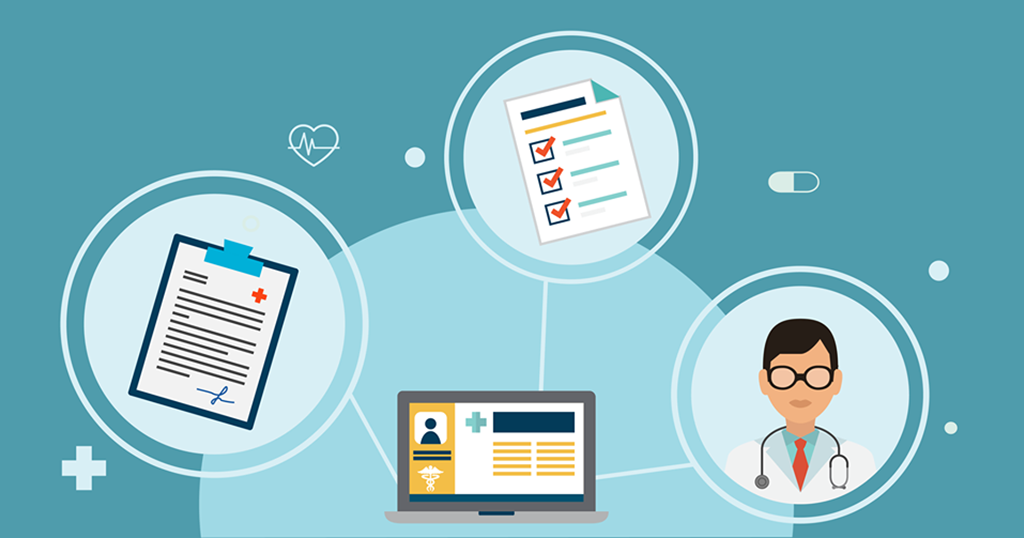3 Tips to Implement Automated Credentialing in Healthcare Staffing
When we meet medical personnel and doctors in an emergency room or a hospital, we assume that they’re qualified and competent to practice medicine. But statistics tell otherwise. According to a, 61 cases of fake doctors were reported in California in 2012.
Therefore, it’s imperative to verify the authenticity of the healthcare staff for safety reasons. Today, even the smallest medical bungle can cost hundreds of thousands of medical and legal problems.
Physicians, hospitals, and other health institutions are increasingly slammed with lawsuits. This gets worse when the failure happens due to incompetence or frauds of medical staff. This is why failure to properly authenticate the professional credentials of medical staff and practitioners is a big risk for the healthcare industry.
What is Healthcare Credentialing?
The arduous process of verifying the experience and training of healthcare professionals is called credentialing. Credentialing must be done at the time of enrollment or hiring a new medical professional. It should later regularly abide by the rules and regulations set by accreditation and regulatory organizations such as The Joint Commission (TJC) and the National Committee for Quality Assurance (NCQA).
Healthcare credentialing had been mainly a manual process, up until a few years ago. The recent automation in healthcare staffing software has mostly replaced paper. A competitive market has forced healthcare staffing agencies to further streamline and automate their credentialing processes.
![]()
Streamlining and digitizing the credentialing process comes with many prominent perks such as improved security of sensitive information, decreased costs, and faster turnaround time. Credentialing process usually incorporates the following:
- Document Capture
Portals capturing information from a variety of data sources, i.e. electronic documents, paper, e-forms.
- Batch Processing
Data extraction from a variety of files, eliminating manual indexing, filing, and sorting.
- Data Security
Security features prevent unauthorized access to sensitive information.
- Intelligent Notification and Routing
Automated e-mail messages to credentialing specialists alerting them of new activity.
- Audit Dashboard
Recording and monitoring of any recent activity during the credentialing process.
![]()
Here are three tips you can use to automate Credentialing in Healthcare Staffing.
Integration is the Key
Integration is the biggest area for improvement for healthcare staffing agencies and also a prominent time saver. Companies with Applicant Tracking System (ATS) should integrate their current credentialing software with healthcare staffing software and ATS. Integration is vital because it reduces human error in the healthcare credentialing process.
Electronic signature software, behavioral and situational exam tools, testing, and checklist tool integration can eliminate weeks or sometimes even months of delay. Additionally, the integration will allow healthcare systems to efficiently manage workflows and report for real-time review.
Credential Status Notification
Your recruits must get automatically notified about their credentials and, most importantly, expired licenses. Tracking the expiration dates of the credentials enables the credentialing team to be accurate and authentic. Saving time lets them verify the credentials of a large number of candidates in a short span.
Credentialing tools should be accessible and easy to use. For example, a dashboard where the candidate can track and upload their credentials in a few clicks. Also, it should support the built-in verification process. When any new document is uploaded, old documents should automatically be archived to reduce redundancy and confusion.
Accessibility with a Portal
Storing all your credentials in one central location, which has facility access, is a good addition for your clients. Let us assume that the Joint Commission wants real-time access to the healthcare facility’s ATS to enquire about the current or retired medical professionals.
Storing all the information at a central location helps VMS or master vendor to access and manage all the temporary staff’s credentials.
Overall, automation would mitigate any compliance risk, which will ultimately help your staff to choose the best candidate. In the end, all the healthcare facilities will only choose credentialing agencies that will assist them with their bottom line and professional goals.
Read More: Nurse Burnout: An Occupational Hazard
Subscribe For Updates
Categories
- Accountant
- AI
- Automation
- Awards and Recognitions
- Blue Collar Staffing
- Burnouts
- Campus Recruiting
- Cloud
- Co-Ops agreements
- Company Culture
- Compliance
- contingent workforce
- Contingent Workforce
- COVID-19
- Cyber Security Staffing
- Data Strategy
- Digital Transformation
- direct sourcing
- Distributed Workforce
- Diversity
- Diversity & Inclusion
- Economy
- Events & Conferences
- fleet industry
- Gig Economy
- Girls in Tech
- Global Talent Research and Staffing
- Government
- Healthcare
- Healthcare Staffing
- Hiring Process
- Hiring Trends
- Home Helathcare
- HR
- HR Practices
- HR Tech
- IT
- Labor Shortages
- Life Science
- Local Governments
- News
- Nursing
- Payroll Staffing
- Public Sectors
- Recruiting
- Remote Work
- Skill Gap
- SMB Hiring
- Snowflake
- Staffing
- Staffing Augmentation
- Staffing Challenges
- Talent ROI
- Tech Staffing
- Technology
- Tips & tricks
- Total Talent Management
- UI/UX Design
- Uncategorized
- Veteran Staffing
- Veterans Hiring
- Veterans Hiring
- Workforce Management
Recent Posts
- Automation in Recruiting: From Chatbots to Predictive Screening
- Gig Economy Expansion: The Impact on Talent Pools and Business Models
- Skills-Based Hiring: Why Credentials Alone Don’t Cut It in 2025
- Procurement 3.0: AI & Intelligent Automation in 2025
- Q3 Is Here: Is Your Contingent Workforce Strategy Falling Behind?
Newsletter
Archive
- September 2025
- August 2025
- June 2025
- April 2025
- March 2025
- December 2024
- November 2024
- October 2024
- September 2024
- August 2024
- July 2024
- June 2024
- May 2024
- April 2024
- March 2024
- February 2024
- January 2024
- December 2023
- November 2023
- October 2023
- September 2023
- August 2023
- July 2023
- June 2023
- May 2023
- April 2023
- March 2023
- February 2023
- December 2022
- November 2022
- October 2022
- September 2022
- August 2022
- July 2022
- June 2022
- November 2021
- October 2021
- September 2021
- August 2021
- July 2021
- June 2021
- May 2021
- April 2021
- March 2021
- February 2021
- January 2021
- December 2020
- November 2020
- October 2020
- September 2020
- August 2020
- July 2020
- June 2020
- May 2020
- April 2020
- March 2020
- February 2020
- January 2020
- December 2019
- November 2019
- October 2019
- September 2019
- August 2019
- July 2019
- June 2019
- May 2019
- January 2019
- December 2018
- November 2018
- October 2018
- September 2018
- August 2018
- July 2018
- June 2018
- May 2018
- April 2018
- March 2018
- February 2018
- January 2018
- December 2017
- November 2017
- October 2017
- September 2017
- August 2017
- July 2017
- June 2017
- May 2017
- November 2016
- October 2016



